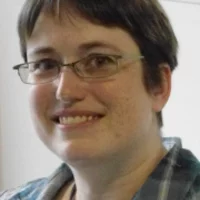Biography
Antonio Cervellino started his scientific career at the University of Padua, Italy, obtaining there a Master in Physics in 1995. Moved to Switzerland for his PhD work on quasicrystals in 1997 with Prof. Walter Steurer's group at ETH Zurich, obtaining the doctorate in Natural Sciences in 2001. Immediately after he was appointed staff research scientist at the Crystallography Institute of the Italian National Research Council (CNR-IC) in Bari, Italy where he remained until 2004. He moved back to Switzerland for family reasons and started a career at the PSI with firstly a short research grant with the Materials Science and Simulations group, followed by a three year postdoctoral position as scientist at the DMC neutron powder diffraction instrument of SINQ. Since 2008 in the current position as scientist at the X04SA Materials Science beamline at the PSI's Swiss Light Source synchrotron.
Institutional Responsibilities
Maintaining and developing the experimental capabilities of the Powder Diffraction station of the X04SA Materials Science beamline of SLS. Assisting external users on conducting experiments at the station, with an user-friendly instrument interface. Conducting own research related to the instrument and establishing scientific collaborations with a view to expanding the potential user basin of the beamline. Endeavor to obtain research project funding from external sources with the aim to finance instrument developments and the education of young scientists.
Scientific Research
Since his PhD on quasicrystal structural studies, Antonio's principal research focus has been consistently the scattering and diffraction from non-periodic objects. This includes of course objects that are only approximately periodic, such as crystals of very small dimensions (nanocrystals) and/or containing defects and other features not simply amenable to periodicity (surfaces and interfaces) and nucleation and phase transitions, correlations between (micro)structure and physical properties (optical, magnetic, ...). An important corollary is the improvement of data quality with the purpose of detecting and exploiting weak and very weak signal components. This relates to the fact that non-periodic scattering signals are spread everywhere in momentum transfer space, leading to the necessity of studying weak and extended spectra. In fact, Total Scattering is an appropriate and successful moniker for this research field.
He is the main author of the software suite DEBUSSY . This is a suite of program able to calculate the powder diffraction signal of any atomic configuration up to quite large numbers of atoms (~ 108) and to compare calculated patterns (possibly thousands thereof, within some parametric distribution) with experimental data.
Selected Publications
For an extensive overview we kindly refer you to our publication repository DORA.
Texture corrections for total scattering functions. A. Cervellino and R. Frison, Acta Crystallographica vol. A76, p. 302-317 (2020). The Debye scattering equation (DSE) is generalized and augmented in order to account for moderate texture effects, yielding the differential cross section as a function of atomic coordinates and texture coefficients subject to symmetry constraints. Implications for the evaluation of the pair distribution function (PDF) as a direct transform of powder diffraction data from textured samples are also discussed.
Crystal Structure, Morphology, and Surface Termination of Cyan-Emissive, Six-Monolayers-Thick CsPbBr3 Nanoplatelets from X-ray Total Scattering. F. Bertolotti, G. Nedelcu, A. Vivani, A. Cervellino, N. Masciocchi, A. Guagliardi, M. V. Kovalenko, ACS Nano vol. 12, p. 14294-14307 (2019). Highly anisotropic colloidal CsPbBr3 nanoplatelets (NPLs) represent an appealing class of colloidal quantum wells with enhanced light emissivity. Here we address their elusive atomic structure. By means of X-ray total scattering analysed by the Debye scattering equation (DSE) approach, we could determine that the NPLs are six-monolayers thick and orthorhombic (Pnma space group), with the {010} and {101} planes corresponding to the six facets of the NPL, with basal planes of {101} type. The NPLs undergo a lattice relaxation with a major deformation in the axial direction, pointing to a structural origin of the higher compliance along the b axis. The DSE-based analysis also supports a CsBr surface termination type, with half Cs sites and a half (or slightly more) Br sites vacant.
In Situ Liquid SAXS Studies on the Early Stage of Calcium Carbonate Formation. A.S.A. Mohammed, A. Carino, A. Testino, M.R. Andalibi and A. Cervellino, Part. Part. Syst. Charact. vol. 36, Article number 1800482 (2019). Calcium carbonate is a model system to investigate the mechanism of solid formation by precipitation from solutions, and it is often considered in the debated classical and nonclassical nucleation mechanism. This study focuses on the little-known and much debated early stage of its formation. Therefore, contactless devices have been designed and employed to enable investigations on the early stages of the precipitation pathway of calcium carbonate in supersaturated solutions using classical scattering methods such as wide‐angle X‐ray scattering (WAXS) and small‐angle X‐ray scattering (SAXS) techniques. In particular, SAXS is crucial for investigating the size of entities formed from supersaturated solutions before the critical conditions for amorphous calcium carbonate (ACC) nucleation are attained. The saturation level is controlled and kept constant by mixing four diluted solutions (i.e., NaOH, CaCl2, NaHCO3, H2O) at constant T and pH. The scattering data are collected on a liquid jet generated about 75 s after the mixing point. The data are modeled using parametric statistical models providing insight about the size distribution of denser matter in the liquid jet. Theoretical implications on the early stage of solid formation pathway are inferred.
Coulomb spin liquid in anion-disordered pyrochlore Tb2Hf2O7. R. Sibille, E. Lhotel, M. C Hatnean, G. J. Nielsen, G. Ehlers, A. Cervellino, E. Ressouche, M. Frontzek, O. Zaharko, V. Pomjakushin, U. Stuhr, H. C. Walker, D. T Adroja, H. Luetkens, C. Baines, A. Amato, G. Balakrishnan, T. Fennell, M. Kenzelmann, Nature Communications vol. 8, Article number 892 (2017). The charge ordered structure of ions and vacancies characterizing rare-earth pyrochlore oxides serves as a model for the study of geometrically frustrated magnetism. The organization of magnetic ions into networks of corner-sharing tetrahedra gives rise to highly correlated magnetic phases with strong fluctuations, including spin liquids and spin ices. It is an open question how these ground states governed by local rules are affected by disorder. Here we demonstrate in the pyrochlore Tb2Hf2O7, that the vicinity of the disordering transition towards a defective fluorite structure translates into a tunable density of anion Frenkel disorder while cations remain ordered. Quenched random crystal fields and disordered exchange interactions can therefore be introduced into otherwise perfect pyrochlore lattices of magnetic ions. We show that disorder can play a crucial role in preventing long-range magnetic order at low temperatures, and instead induces a strongly fluctuating Coulomb spin liquid with defect-induced frozen magnetic degrees of freedom.
Crystal symmetry breaking and vacancies in colloidal lead chalcogenide quantum dots. F. Bertolotti, D. N. Dirin, M. Ibáñez, Frank Krumeich, A. Cervellino, R. Frison, O. Voznyy, E. H. Sargent, M. V. Kovalenko, A. Guagliardi, N. Masciocchi, Nature Materials vol. 15, p. 987-994 (2016). Size and shape tunability and low-cost solution processability make colloidal lead chalcogenide quantum dots (QDs) an emerging class of building blocks for innovative photovoltaic, thermoelectric and optoelectronic devices. Lead chalcogenide QDs are known to crystallize in the rock-salt structure, although with very different atomic order and stoichiometry in the core and surface regions; however, there exists no convincing prior identification of how extreme downsizing and surface-induced ligand effects influence structural distortion. Using forefront X-ray scattering techniques and density functional theory calculations, here we have identified that, at sizes below 8 nm, PbS and PbSe QDs undergo a lattice distortion with displacement of the Pb sublattice, driven by ligand-induced tensile strain. The resulting permanent electric dipoles may have implications on the oriented attachment of these QDs. Evidence is found for a Pb-deficient core and, in the as-synthesized QDs, for a rhombic dodecahedral shape with nonpolar {110} facets. On varying the nature of the surface ligands, differences in lattice strains are found.
The new release of a Debye user system for nanocrystalline and/or disordered materials. A. Cervellino, R. Frison, F. Bertolotti and A. Guagliardi, Journal of Applied Crystallography vol. 48, p. 2026-2032 (2015). The new release of DEBUSSY is introduced, a free open-source package devoted to the analysis of powder diffraction data by Debye scattering equation (DSE) based Total Scattering techniques from nanocrystalline, defective and/or nonperiodic materials. The general strategy of the suite remains unchanged, following a two-step approach managed by the CLAUDE and DEBUSSY programs, respectively. The first step essentially consists in generating a database where structural, size and shape information on a nanoparticle population is efficiently encoded; the second step consists in the calculation, through the DSE, of the total diffraction pattern using the previously generated database and a set of model parameters optimized by the program. Several novelties lie in the computational, modelling and graphical levels, and several new programs and features have been added. The CLAUDE suite also includes a program for calculation of the pair distribution function. A graphical user interface is provided.
Books
X-Ray Powder Diffraction Characterization of Nanomaterials, in: X-ray and Neutron Techniques for Nanomaterials Characterization. A. Cervellino, R. Frison, N. Masciocchi, A. Guagliardi; C. Kumar (Editor), Springer Verlag Berlin Heidelberg (2016), ISBN: 978-3-662-48604-7
Crystals: Structure and Microstructure of Nanocrystals Using the Debye Function Analysis, in: CRC Concise Encyclopedia of Nanotechnology. A. Guagliardi, A. Cervellino, R. Frison, G. Cernuto, N. Masciocchi; B.I. Kharisov, O.V. Kharissova, U. Ortiz-Mendez (Editors), CRC Concise Encyclopedia of Nanotechnology (2015), ISBN: 978-1-466-58034-3


